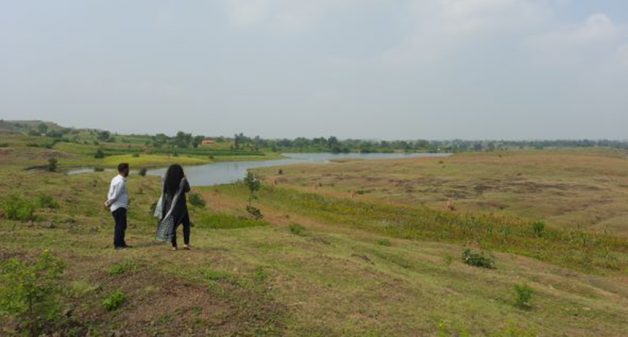
Of livelihoods in barren terrains
In remote and barren terrains people should be helped in turning adverse conditions to their advantage, rather than pursuing unviable dreams.

In remote and barren terrains people should be helped in turning adverse conditions to their advantage, rather than pursuing unviable dreams.
Matali is a remote village in Barwani district of Madhya Pradesh. It is so remote that the village with five hamlets and about 500 households spread over 13 hillocks of 6 km radius lies in oblivion to the rest of the country.
I sat there in the hall of Matali’s gram panchayat listening to the enthusiastic and high-pitched narration of middle-aged women about how they work in their group and how they have benefited from the interventions made for them.
There were a few men too who would intervene and speak whenever they felt the patronising need to support their womenfolk. They told me how they had managed to get Ayushman card for all the residents, and pension for all the divyang, elderly and the widows.
They said they were struggling to get their ration shop under the administration of the village organisation, as the dealer didn’t seem to believe in serving them regularly. There in the middle of nowhere someone pulled out a smart phone and showed how he could produce data of households that got their monthly ration in full.
As is inevitable, the talk turned to improving their lot. As the women and the men talked, images of that very remote, undulating landscape with its obviously thin soils and weed-overrun farms swelled in my mind. Surely the village would come pretty high on the list of places I would not want to be born in if the good God insisted on my rebirth and gave me a choice.
As I mused, one of the villagers mentioned the possibility of creating a tourist spot by the pond in the village. They said they could build cottages for overnight stay, offer rural food and bumpy rides in bullock carts, and of course tribal dance as additional attractions in the evening. Wow, rural tourism! What a lovely, fashionable idea! One elderly lady said that the young men could open shops selling snacks and knickknacks.
I marvelled at the sheer force of optimism. I too joined in their reverie of loads of eager tourists alighting their vehicles to revel in the natural beauty of barren hills and uneven lands with thorny bushes, and to take a blessed look at a shy strip of water that would last till the middle of March.
But the hard question persists: what indeed can be done for people who live in such places? I had seen fair clumps of akua (Calotropis or crown flower) and besharam (Ipomoea or morning glory) on the way and surely plants with similar toxic contents would grow here too. Agave, though not seen, surely would find the dry and dusty terrain very hospitable, and surely agave itself has diverse possibilities, if not as pesticide.
As we walked up to their intended picnic spot, the ground showed diverse very short plants which even goats refuse to browse on. If the lands do not yield bounteous crops, they do not seem to stint in producing vegetation that can be useful because it is useless.
There is a growing interest in organic agronomic practices. A large tract of our country lacks plants with which bio-pesticides and plant protection materials can be made. Can people in such locations grow those plants on a large scale and produce bio-pesticides? What would be needed to produce such raw material for bio-pesticides at scale?
But the most important question would be to enable people to rethink about their resources. How can we make them think of exploiting their seemingly punishing terrain as a competitive asset and not run after ideas that have limited potential, if any at all?
Sanjiv Phansalkar is the director of VikasAnvesh Foundation, Pune. He was earlier a faculty member at the Institute of Rural Management Anand (IRMA). Phansalkar is a fellow of the Indian Institute of Management (IIM) Ahmedabad.